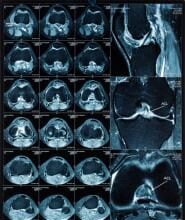Posted 2/15/13 on Medscape Connect’s Care & Cost Blog
Health care’s purchasers crave certainty. But complexity – and therefore uncertainty – rules. Assurances are hard to come by.
Posted 2/15/13 on Medscape Connect’s Care & Cost Blog
Health care’s purchasers crave certainty. But complexity – and therefore uncertainty – rules. Assurances are hard to come by.
 The most common question asked by prospective clients of my onsite clinic / medical management firm is how much less their employee health benefits will cost if they deploy our services. They often expect that we’ll review their claims history and nail down what their health care will cost once we’re involved. Looking in the rear view mirror can inform the future, but it isn’t foolproof.
The most common question asked by prospective clients of my onsite clinic / medical management firm is how much less their employee health benefits will cost if they deploy our services. They often expect that we’ll review their claims history and nail down what their health care will cost once we’re involved. Looking in the rear view mirror can inform the future, but it isn’t foolproof.
The Complexity of Health Care Risk
The challenge here is that so many different mechanisms contribute to the need for care, the ways care is accessed, the ways care is delivered, and the ways it is priced. Even mechanisms that, in isolation, are strong, often are inadequate in the context of larger cost drivers.
This means that while predicting results in general terms is straightforward, doing so with any precision or specificity is a challenge. My firm can point to consistent previous performance with other clients, and show that in most cases we generate a 15+ percent overall savings on group health expenditures, net of the clinic investment. And we can detail how our management of the process is both broader and more targeted than the management of risks before we arrived. But while we’ll sometimes guarantee certain performance targets, we also know that the cards can and will sometimes fall against us.
Even Useful Management Approaches May Prove Inadequate
In the onsite clinic sector, vendors often describe the savings they’ll generate in terms of “replacement” costs. They may argue, for example, that a clinic office visit will cost $X less than on the health plan network. Drugs and labs will cost $Y less in the clinic’s dispensary than they would outside.
This is certainly true. Many primary care services can be delivered more cost effectively in a clinic than in a conventional primary care practice that is trying to optimize the revenue opportunities available through fee-for-service reimbursement.
But a clinic’s unit cost savings may not be large enough to reduce overall health plan costs. Health plan performance is shaped not just by clinical management, but also by financial and administrative influences. Even good primary care, which we know creates positive impacts throughout the system, isn’t an adequate check on a system that, over decades, has developed many often subtle ways to extract more money than it is legitimately entitled to.
The failure to address the robust mechanisms that underlie care and cost may account in part for the fact that, even with the addition of screening, care managers and other components, most medical homes developed in traditional primary care practices have been unable to demonstrate measurable savings or health improvements.
Vectors Of Health Care Risk
It can be useful to list some of the drivers of risk, as a way of developing a broader strategy.
Of course there are the conditions that require care. Health care must tend to the entire range of health experience: pregnancy, injuries, diabetic episodes, incontinence, heart attack, arthritis, neurological disease and everything in between. Frailties can come on us suddenly, in a stroke or a fall, or be progressive and chronic, as with asthma or cancer.
In groups or regions, these issues may be spun by cultural tendencies. Some behaviors generate or exacerbate health conditions. And, as the Dartmouth Atlas makes clear, health care providers in different markets may respond to the same conditions with entirely different care and cost patterns.
But our health system also has financial incentives that encourage overtreatment, drive up pricing, keep information isolated, and steer patients to particular sites, often independent of appropriateness or performance. Quality and cost results can vary wildly, depending on which doctor was seen, whether information could be seamlessly exchanged, whether the care was coordinated, and many other factors.
Layer on top of this whether people are willing to engage in their own health. Will they participate in approaches that are designed to identify problems and follow a regimen to manage ongoing conditions?
We also know that incentives can influence lifestyle, how care is accessed and how it is adhered to, and therefore the health outcomes and costs that result. Carrots and sticks can encourage patients to follow rules built around what’s known to work: doctors and services that offer the best value, letting the primary care physician be your patient advocate and guide, bringing specialty information back to the primary care doctor.
And then there’s just plain poor health and bad luck, which drive catastrophic cases, the fastest growing area of health care cost. People in automobile accidents or suffering major illness. Munich Re recently reported that the percentage of cases that exceed $1 million grew seven-fold over the past decade. Many high cost cases involve misdiagnosis and mismanagement that result in poor quality and excessive cost, one reason behind Walmart’s recent Center-of-Excellence contract announcement.
Multi-Vectored Problems Require Multi-Vectored Solutions
The deeper point is that much of this turmoil can be managed more effectively but that doing so requires a multi-focused effort. The emerging models for improving care and cost can’t only rely on primary care, or selecting better doctors and hospitals, but will leverage incentives, data-driven narrow networks, volume-based contracts, clinical decision support, care-neutral reimbursement, and a host of other mechanisms that can bring health care back into homeostasis.
In other words, the new way of managing care isn’t just about replacing a higher cost service out on the plan with a lower cost one in the clinic. It’s about changing the care patterns and many of the structures that support that care. It’s about better ways to manage the processes that undergird care and cost. And while it may be difficult to precisely forecast the result each time, it isn’t hard to understand that the path to that result is less rigged, better for the patient and better for the purchaser.
Brian Klepper is Chief Development Officer of WeCare TLC, an onsite clinic and medical management firm based in Orlando.
The post A Broader Approach To Managing Health Care Risk appeared first on The Doctor Weighs In.








